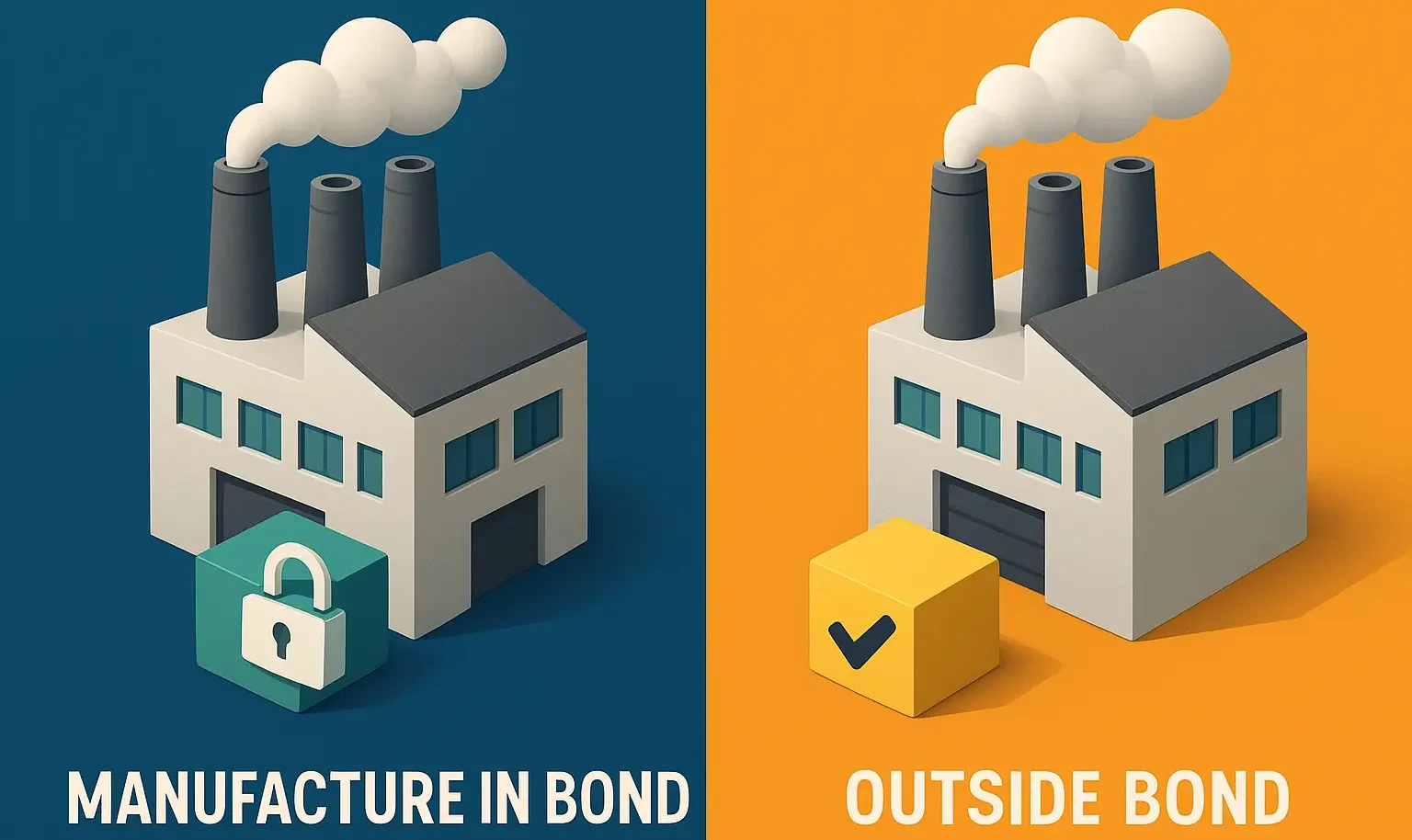This article explains about the difference between manufacture in bond and outside bond under the Medicinal and Toilet Preparation Act 1955 with legal requirements.
Manufacture In Bond
- Definition: Manufacturing medicinal preparations under a bond, primarily for export purposes.
-
Key Features:
- Bonded Premises: Facilities authorized to produce goods for export without immediate payment of duties or taxes.
- Tax and Duty Exemptions: Exemptions or deferments on taxes until products are sold domestically.
- Quality Control: Strict adherence to international standards for export.
- Record-Keeping: Detailed documentation of production, raw materials, and exports is mandatory.
- Regulatory Oversight: Enhanced monitoring by national and international regulatory bodies.
-
Benefits:
- Encourages export-oriented manufacturing.
- Reduces financial burden by deferring tax payments until domestic sale.
Advertisements
Manufacture Outside Bond
- Definition: Manufacturing medicinal preparations for domestic consumption within the country.
-
Key Features:
- Domestic Focus: Products intended for sale within the domestic market.
- Compliance with National Standards: Adherence to quality, safety, and labeling standards as per Indian regulations.
- Taxation: Manufacturers are liable for taxes and duties on their products.
- Quality Assurance: Implementation of Good Manufacturing Practices (GMP) for safety and efficacy.
- Distribution Control: Regulated distribution to prevent counterfeit products.
-
Benefits:
- Ensures high-quality medicines for the domestic market.
- Supports local pharmaceutical industries and economic growth.
Click Here to Watch the Best Pharma Videos
Advertisements

